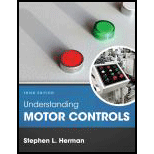
Understanding Motor Controls
3rd Edition
ISBN: 9781305498129
Author: Stephen L. Herman
Publisher: Cengage Learning
expand_more
expand_more
format_list_bulleted
Textbook Question
Chapter 19, Problem 1RQ
What is the function of a proximity detector?
Expert Solution & Answer
To determine
The function of a proximity detector.
Explanation of Solution
Proximity sensors or detectors are used to sense an object's presence without touching it directly. It stops the detector from wearing and allows it to handle hot red metals. Proximity detectors work on different principles. Many metal detectors detect only iron metals, while others could sense all types of metals.
Want to see more full solutions like this?
Subscribe now to access step-by-step solutions to millions of textbook problems written by subject matter experts!
Students have asked these similar questions
4- A horizontal Venturi meter is used to measure the flow rate of water through the piping system
of 20 cm I.D, where the diameter of throat in the meter is d₂ = 10 cm. The pressure at inlet is
17.658 N/cm2 gauge and the vacuum pressure of 35 cm Hg at throat. Find the discharge of water.
Take Cd = 0.98.
10
6
Chapter 19 Solutions
Understanding Motor Controls
Ch. 19 - What is the function of a proximity detector?
Ch. 19 - What is the basic principle of operation used with...Ch. 19 - What is an oscillator?Ch. 19 - What is the basic operating principle of operation...Ch. 19 - What type of electric circuit is used to increase...Ch. 19 - Name two types of proximity detectors used to...Ch. 19 - What is the maximum range at which most capacitive...Ch. 19 - How is it possible for an ultrasonic proximity...
Knowledge Booster
Learn more about
Need a deep-dive on the concept behind this application? Look no further. Learn more about this topic, mechanical-engineering and related others by exploring similar questions and additional content below.Similar questions
arrow_back_ios
SEE MORE QUESTIONS
arrow_forward_ios
Recommended textbooks for you
 Understanding Motor ControlsMechanical EngineeringISBN:9781337798686Author:Stephen L. HermanPublisher:Delmar Cengage Learning
Understanding Motor ControlsMechanical EngineeringISBN:9781337798686Author:Stephen L. HermanPublisher:Delmar Cengage Learning Automotive Technology: A Systems Approach (MindTa...Mechanical EngineeringISBN:9781133612315Author:Jack Erjavec, Rob ThompsonPublisher:Cengage Learning
Automotive Technology: A Systems Approach (MindTa...Mechanical EngineeringISBN:9781133612315Author:Jack Erjavec, Rob ThompsonPublisher:Cengage Learning Refrigeration and Air Conditioning Technology (Mi...Mechanical EngineeringISBN:9781305578296Author:John Tomczyk, Eugene Silberstein, Bill Whitman, Bill JohnsonPublisher:Cengage Learning
Refrigeration and Air Conditioning Technology (Mi...Mechanical EngineeringISBN:9781305578296Author:John Tomczyk, Eugene Silberstein, Bill Whitman, Bill JohnsonPublisher:Cengage Learning

Understanding Motor Controls
Mechanical Engineering
ISBN:9781337798686
Author:Stephen L. Herman
Publisher:Delmar Cengage Learning

Automotive Technology: A Systems Approach (MindTa...
Mechanical Engineering
ISBN:9781133612315
Author:Jack Erjavec, Rob Thompson
Publisher:Cengage Learning

Refrigeration and Air Conditioning Technology (Mi...
Mechanical Engineering
ISBN:9781305578296
Author:John Tomczyk, Eugene Silberstein, Bill Whitman, Bill Johnson
Publisher:Cengage Learning
Mod-01 Lec-16 Basics of Instrumentation; Author: nptelhrd;https://www.youtube.com/watch?v=qbKnW42ZM5c;License: Standard YouTube License, CC-BY